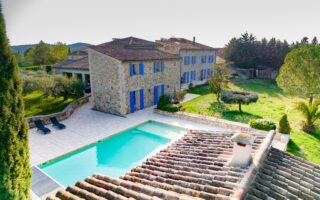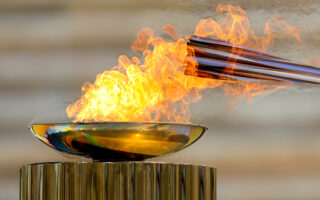Renewable Energy in France – the Options

Part one – energy saving tips in France
With the cost of energy rising, it’s more important than ever to find the most effecting ways of heating and providing energy for your house.
Renewable Energy
The term ‘renewable energy’ aka alternative energy, encompasses a variety of power generation sources. Generally, it refers to electrical power derived from solar or wind energy, as opposed to ‘single-use’ resources such as coal or uranium.
The most common forms of alternative energy available for homeowner use today are solar power, wind power and micro-hydro power.
The benefits of using renewable energy sources are considerable. From an environmental standpoint, solar, wind and waterpower are all non-emission energy sources. Unlike coal combustion power plants, no harmful exhaust is produced when using alternative energy generators.
There is also no worry about toxic or radioactive waste products, as there is with nuclear power.
Additionally no valuable resources are ‘used up’ with renewable resource power generation. If every home on earth were powered with renewable energy it would never cause a shortage of wind, water or sunlight.
As a matter of interest, a typical domestic wind turbine can save 2.8 tonnes of CO2 per year and around 56 tonnes over its lifetime.
Let’s look at the options in detail.
Wind Turbines
Boiled down to its simplest principles, a wind turbine’s rotating blades convert the wind’s kinetic energy into rotational momentum in a shaft. The rotating shaft turns an alternator, which makes electricity.
The design details that determine which turbines are best suited for various wind speeds get more involved, but all wind turbines operate in the same basic manner.
The wind turbine blades must turn to face the wind, so some device to ‘yaw’ the turbine into wind is needed, allowing the turbine to track the winds as they shift direction. This is typically done by a tail, much the same as that fitted to aircraft – the tail directs the rotor into the wind.
Some sort of governing system limits the rotor’s revolutions per minute as well as generator output to protect the turbine from high winds.
Small wind-electric systems can provide electricity on remote, off-grid sites, or in town they can be connected to the utility grid.
If you invest up front in good equipment and design, wind-electric systems can make economic and environmental sense. They also bring a great deal of satisfaction – there’s nothing quite like watching your wind generator turn a summer breeze or a winter storm into electrical energy.
Like solar power, a wind energy system is an entirely clean source of power. Wind turbines produce no emissions, use no traditional fuel, and can provide reliable year-round power given the right location.
For a turbine to work effectively, not surprisingly you need sufficient wind energy for sufficient time to produce what is required. Of course the size (and therefore kW rating) of the wind turbine determines how much energy can be produced.
The turbine power (kW rating) is the rate at which the turbine produces electricity.
To determine how much energy is produced, you need to calculate kW hours.
i.e. a 1kW turbine running at its rated power for 8 hours would give you 8 x 1 kW hours of electricity.
If you look at your electricity bill you will see that you are charged in kW hours.
Solar Photovoltaic (Solar PV)
These are also electricity producers and are probably the most reliable form of renewable energy.
The electricity produced in this case is Direct Current, DC, which can be converted to AC if required.
The electrical output is dependent upon the intensity of the light so the output will be reduced on a cloudy overcast day.
However, they do not require direct sunlight to work, merely daylight; so as long as the sun continues to rise each day the panels will continue to produce electricity. Even on overcast days a Solar PV system will still function.
Because there are no moving parts the lifetime expectancy is very good and considered to be well in excess of 20 years.
The downside of Solar PV systems is the capital cost and therefore return on investment.
However, the efficiency of Solar PV (around 20% at present) is improving all the time so we can expect costs to reduce in the future.
In reality, unless you have a substantial amount to spend on a system or are a hardened environmentalist they are perhaps the most expensive form of renewable energy and you can reckon on a payback period of 15 plus years.
Don’t misunderstand me; they have their uses in the right place – and ‘off grid’ as part of a hybrid system is probably the main one. (A hybrid system is one which combines technologies, i.e. wind and solar.)
Some friends have a garden which is some way from their house (only in France!) and wanted some lights and power for a ‘drinks fridge’, so they have a small solar PV system where it was prohibitively expensive to run utility power. It works very well and as the demand is low it wasn’t overly expensive either.
Apart from which, they now have cold beer and wine – which is priceless!
Solar Thermal
These systems represent an excellent investment for most people, the most common applications being to supply domestic hot water, or for swimming pool heating.
As the technology is simple and relatively low cost, solar hot water systems are usually considered
to be the most economic type of renewable energy system to fit to your home.
Generally there are two main types, vacuum tubes and flat plate collectors.
Vacuum tubes are just that, glass (pyrex) tubes which are vacuum-sealed so ambient temperature has almost no effect upon performance. They’re very efficient and work well.
Flat plate collectors are essentially pipes run in between two sealed plates of glass. A radiator in a greenhouse, if you like. These are not vacuum sealed so ambient temperature does have an effect on performance
Neither type requires direct sunlight to work, merely daylight.
In essence a fluid is moved around the system / tubes which is heated by the daylight.
I’m sure you have all run a hosepipe in the summer and found the water that was in the pipe is really quite warm, even hot at times. In fact this is not the same principal as the water in the hosepipe was heated by the warmth of the sun – and not ultraviolet (UV) as with solar collectors.
Generally these systems are mounted on a roof but can be mounted anywhere orientated to capture the most daylight. South facing is ideal but SW or SE is almost as good. In fact, facing East or West will work but with reduced efficiency.
Ideally they should be angled to the same angle of latitude at your location (say 45 degrees for France) but generally speaking if they are mounted at the same angle of your roof there will only be a small reduction in efficiency.
Micro Hydro, aka Water Turbines
This works on the same principle as a wind turbine but using water. They are used to generate
electricity.
Water turbines are extremely efficient and probably the most cost effective way of providing
renewable energy.
In fact, water turbines are the absolute king of renewable energy. The only the downside is that you will need a good dependable flow rate or head of water from a stream or river – unless you have a water wheel of course.
If you are lucky enough to have a water wheel then fitting a generator of some sort is perfectly feasible.
The main work involved is undertaking the required mechanical engineering to couple the generator to the wheel itself.
Underfloor Heating Systems
Underfloor heating (UFH) is far more efficient than traditional radiators.
Wall mounted heaters loose heat through the adjacent wall, whereas the losses from underfloor systems are much lower.
Virtually all of the energy given out by underfloor heating is used to heat the room – in contrast to radiators – and UFH provides a more comfortable heat with no ‘hot spots’.
This is the primary reason that underfloor heating systems are economic in operation as they can be run at much lower temperatures – around 18-20 degrees C – than radiators which are typically run at 60 – 65 degree’s.
Underfloor heating systems have low running costs when compared with other methods and are unobtrusive.
One myth about UFH we can dispel is that it can be fitted under virtually any type of floor surface.
It really doesn’t matter if it’s tiles, slabs, slate or wood. However, one point worth mentioning is that wood should never be subjected to temperatures greater than 27° C.
Wood is a natural product so higher temperatures can cause the wood to warp or split – not a problem with a well-controlled system.
The only downside is that they cannot be retro-fitted – without taking up your floors of course.
In conclusion
You don’t have to spend money to reduce your energy bills.
There is almost certainly something you can do today and even if you are conscientious there may be something you have overlooked.
Once you have done what you can for free, you are probably going to have to spend money to further reduce your reliance on the utility companies.
Those with a bottomless pit of money need not be concerned how they spend it; the rest of us need to spend time researching the options and take a little time to gain at least some understanding of the technologies available.
Armed with this newfound knowledge, ask searching questions of your chosen supplier – a reputable company will probably appreciate you asking.
Remember, you get what you pay for.
If you invest up front in good equipment and design you are likely to be rewarded with many, many years of trouble free operation.
After all, your capital investment should be a one-off – your utility bills are for life!
Share to: Facebook Twitter LinkedIn Email
More in courses, garden, heating, river, summer, wine, work
By FrenchEntrée
Leave a reply
Your email address will not be published. Required fields are marked *



